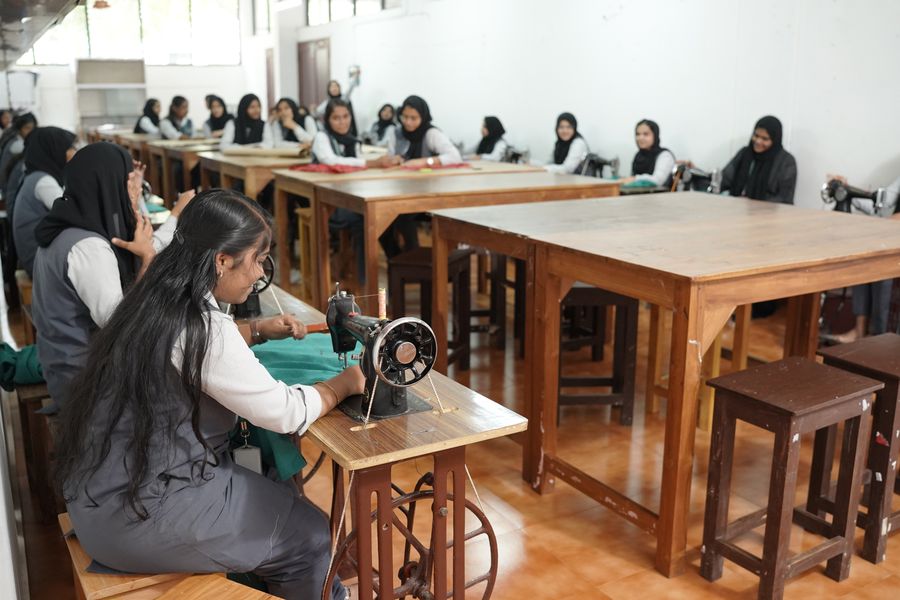Nutrition Lab
The department has a well equipped nutrition lab to provide practical knowledge of how to plan diet keeping in mind the patient needs and requirements. The students are taught to plan the menu scientifically, based on the calorific value of the food materials. Food Science experiments create an understanding of the influence of food ingredients, the amounts in which they need to be used for a required product and how methods of preparation and processing can be altered for desired results. Common home measures in use in India and their weight and volume equivalents in metric units and identification of common adulterants, effect of browning, heat and pH on vegetables and fruits has been added to enable the students to make use of this book more effectively. This booklet contains the Method of recipes which may be useful for Home Science students in providing nutritious menus.
Objectives:
- To describe the relationship between nutrition and health.
- To describe the classification, functions, sources and recommended daily allowance of all Nutrients (CHO, Proteins, Fats, Vitamins, Minerals etc)
- To describe the sources, Functions, and requirements of water and electrolytes.
- To prepare various types of diets eg: Bland diet, fluid diet, diabetic diet, cardiac diet etc.
- To prepare different types of normal and therapeutic diet according to principles of food preparation.
- To use a variety of cooking techniques in the preparation of meal.
- To prepare food under safe and proper sanitary conditions.
- To use nutrition knowledge to prepare meal according to individual needs.
- To work individually and in group in a well organized and cooperative manner.
Rules in Cooking Laboratory
- Wash hands and dry them well before starting the
- Finger nails should be
- Keep hands away from hairs and face while
- Dress neatly in white. Use apron or lab coat during
- Tie the hair properly and place a cap on the
- Do not use the handkerchief or dress to hold the hot
- Use towels while transferring vessels from the
- Use dish towels to wipe the
- Keep the recipe book as per convenience for
- Place personal things on the shelf or table
- Keep spoons separately for testing the
- All the waste materials like burnt matches sticks, paper and vegetable peels should be put in the place
- While washing vessels all the food particles should be first scraped and then put into
- Greasy vessels should be first wiped with a piece of paper and then rinsed with hot
- After washing the vessels, wipe with a dish
- Keep the cupboards closed while cooking and
- Keep the washing area clean and
- Wash the sink with soap and





